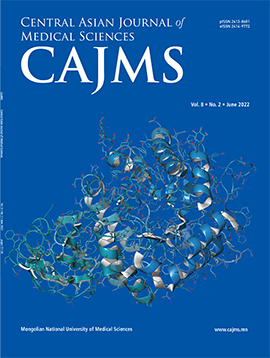The Involvement of Endothelial Progenitor Cell Dysfunction in the Angiographically Defined Coronary Atherosclerotic Patients
DOI:
https://doi.org/10.24079/cajms.2020.09.005Keywords:
Endothelial Progenitor Cell, Colony Forming Units, Endothelial Nitric Oxide Synthetase, Coronary Atherosclerosis, Coronary Artery DiseaseAbstract
Objectives: To evaluate the levels of endothelial progenitor cell-colony forming units in the angiographically defined coronary atherosclerotic patients. Methods: The 10 ml blood was drawn from the peripheral vein of 12-man patients that 4-stable angina, 4 acute myocardial infarction (AMI), and 4 healthy people. Peripheral blood mononuclear cells were isolated by Ficoll density-gradient centrifugation and EPC-CFUs was assayed after two plating and a 6-day culture on fibronectin-coated, 72 well plates, as described. eNOS enzyme titers were determined by ELISA according to the protocol in the cell culture. Results: The people were 52 ± 2.12 years. The number of EPC-CFUs increases with the accordance of patients with stable angina, AMI, healthy people with the statistical significance (H = 15.8, p < 0.001): stable angina (2.6 ± 0.47 colony/well), AMI (6.7 ± 0.81 colony/well), healthy people (10.5 ± 1.34 colony/well). Furthermore, the Kruskal–Wallis test of eNOS enzyme levels in patients with stable angina (5.2 ± 0.61 pg/ml), AMI (8.7 ± 1.49 pg/ml), and healthy people (13.7 ± 2.48 pg/ml). The significant difference (H = 5.7, p < 0.010) was observed among the three groups. The number of EPC-CFUs had a direct significant correlation (r = 0.621, p < 0.001) with the eNOS enzyme levels of this culture. Conclusions: The number of EPC-CFUs and eNOS enzyme levels decrease at patients with stable angina, indicate more than endothelial dysfunction.
Downloads
243
Downloads
Published
How to Cite
Issue
Section
License
Copyright (c) 2020 Mongolian National University of Medical Sciences

This work is licensed under a Creative Commons Attribution-NonCommercial 4.0 International License.




